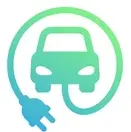The latest count of public EV chargers has swelled to 192,000. According to the U.S. Department of Energy, this number has doubled since the Biden administration took office and is continuing to grow at a rapid rate of 1,000 new chargers every week.
Along with the announcement comes the awarding of $521 million in grants to further expand charging access across the U.S. highway system. This includes 29 states, the District of Columbia, and two Federally Recognized Tribes—a total of 9,200 new EV charging ports.
“The Biden-Harris Administration has been clear about America leading the EV revolution, and thanks to the historic infrastructure package, we’re building a nationwide EV charger network to make sure all drivers have an accessible, reliable, and convenient way to charge their vehicles,” said U.S. Secretary of Transportation Pete Buttigieg. “The awards that we’re announcing today will build on this important work and will help ensure that the cost savings, health and climate benefits, and jobs of the EV future are secured for Americans across the country.”
The growth rate is rather impressive, actually. In mid-January, the U.S. government reported more than 169,000 chargers were deployed and online, meaning a 14% growth in just seven months. The number of chargers deployed weekly has also grown by 11%—from 900 to 1,000—during the same period.
Excellent news, but chargers won’t help much if most people still can’t afford the cars.
I suggest a generous cash-for-guzzlers trade-in program that gives anyone who owns or is paying down a gas vehicle the option to trade it in for an electric vehicle. It should be an even swap if the trade-in was fully paid off (year or model shouldn’t matter, as long as it drives). And if there’s still a balance on the trade-in, the payments should transfer over to the new electric car, the price of which should be adjusted so the remaining number of payments doesn’t change. Make it as seamless and frictionless as possible, and people will wait in line for this shit.
I couldn’t disagree more vehemently.
This program might make sense if we had some ~200 million EVs sitting around gathering dust, but there simply aren’t enough EVs, batteries, or available lithium for a program like this to make any sense economically.
Plus, what are we supposed to do with all of the relatively new ICE vehicles that get traded? Just put them in a dump somewhere?
No, the infrastructure isn’t nearly in place at this point and EVs aren’t a perfect solution for everyone. There’s no reason we need to try to switch everything all at once. We will be likely be transitioning for 50+ years, and that’s okay.
We should keep that in mind for ten years from now.
- EVs are still the minority, still expensive, still not widely accepted. We need incentives to make them easier to buy, investments like increasing charger availability. We need to build it if we expect them to come.
- by 2035, many places will ban sale of new ICE cars, but hundreds of millions of existing ones will still be on the roads. That’s when “cash for guzzlers” is a good idea. EVs will be widely available for every use, so we will need to change focus to early retirement for the polluters
Where? Is there an online map if where these chargers are coming online? What percentage of them are DC high speed?
I ask because I’ve only seen one new high speed charger added in my metro area in the last three years, and it took two years for the buildout in the Target parking lot to complete.
Assuming you live in Austin, as your posts hint:
(Use the filter to remove L1 and L2 so you only see fast chargers)
I see not only many high speed charging stations in the metro area but at least three listed as under construction
Awesome map. I count around 19 DCFC in Austin (including round rock). I’m guessing it’s counting the individual stalls and not the locations/stations to get the 63 number. Most if not all of these were already there. And some have actually been removed (looking at you WalMart on Anderson Ln). Using the under construction filter, I see zero being built in the area as I suspected.
I am glad to see at least one gray lightning bolt icon on I-35 towards Dallas. We really need more high speed chargers on the interstates.
One problem I see is investing in chargers where there may not be much demand.
Instead, they could focus on areas where existing chargers are over-subscribed and there are long waits. These will impact more consumers and better handle demand. If you’re building chargers on a rural highway, just to make sure they’re spaced out every X miles, and they’re used only 20% of the time, that’s a waste.
Instead, double the bank of chargers that are 100% utilized most of the day and you will increase adoption.
Retail Chains don’t build stores where there’s sparse demand. They go where there are a load of potential customers.
It’s not a waste when they add chargers on rural highways at spaced intervals, it’s giving the ability to travel, maybe not where you want, but where someone sometimes will. Without those chargers connecting things people will just continue to spout the whole we can’t go everywhere we want so I won’t get an EV.
I totally get the need for rural chargers. Nobody wants to go on a roadtrip and feel restricted.
But you also have the dual problem that people who live in apartment complexes, condo highrises, or older buildings without garages have no easy way to charge at home. They only get to use public chargers. Or those who commute long distances and would have to top off to make it back home. These are day-to-day issues in cities and high density areas.
You end up with long lines of people sitting in their cars, waiting their turn long into the night or at a far away charger just so they can use their vehicle the next day. These are people who will often swear they’ll switch to hybrids next. They also tell their family, friends, and neighbors who won’t go near EVs.
I could be wrong, but there are a lot more people (who don’t drive Teslas) having to deal with this day-to-day vs those going on occasional road-trips. Both are important, but if I was in charge of planning and budgets, I’d look first on making life easier for the most use-cases.
apartment complexes, condo highrises, or older buildings without garages have no easy way to charge at home. They only get to use public chargers
I’d argue this is a different problem. Those people eventually need a better option than public chargers (unless it’s street parking) and we need to work toward that. For apartments and condos with off street parking, that’s misplaced incentive, not a money problem. You can’t just throw money at building chargers but need to change the incentives so those condos, those apartments have an interest in providing chargers for their residents
We each can only speak to our experience and mine is the opposite. I can charge from home, and I just got back from a 1,200+ mile road trip where I found plenty of superchargers. It worked out really well. However parts of my road trip were rural and I definitely worried about whether I’d find enough chargers. If I was at a charger with a line, that would be frustrating but nowhere near as worrisome as not finding a charger.
I didn’t choose my car based on lines but being able to go where I want to go. Yes please, chargers in all those rural places even if they’re not widely used yet. Let’s help everyone be able to drive their EV there



